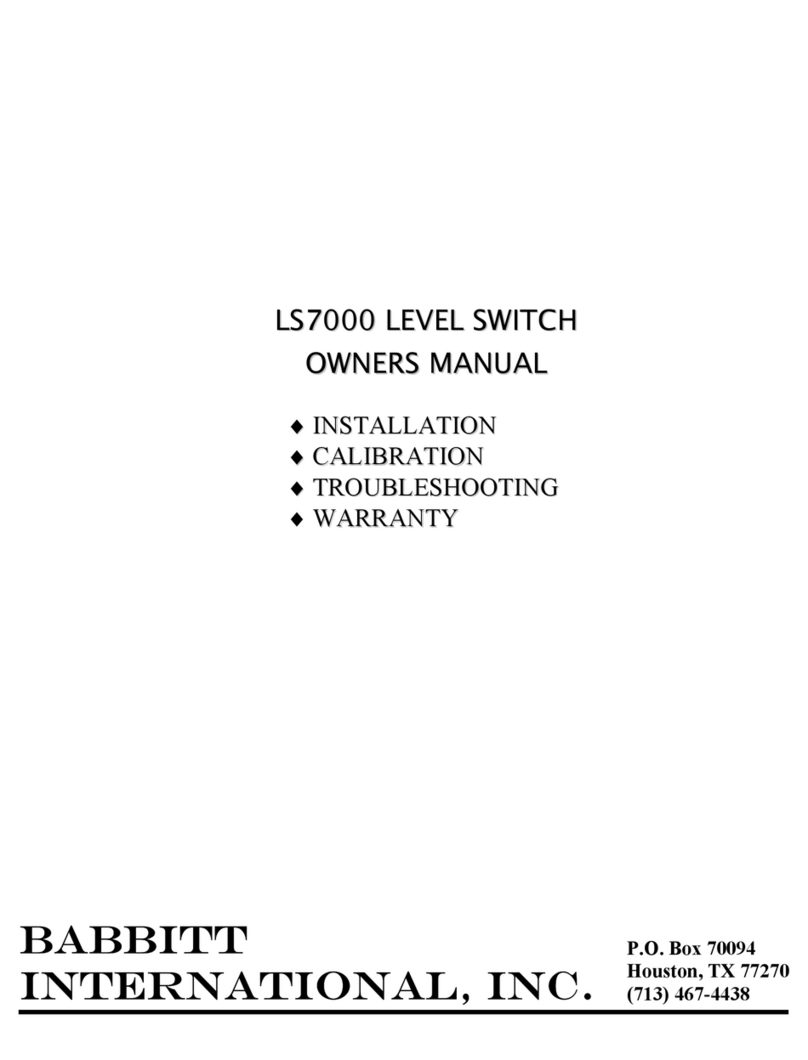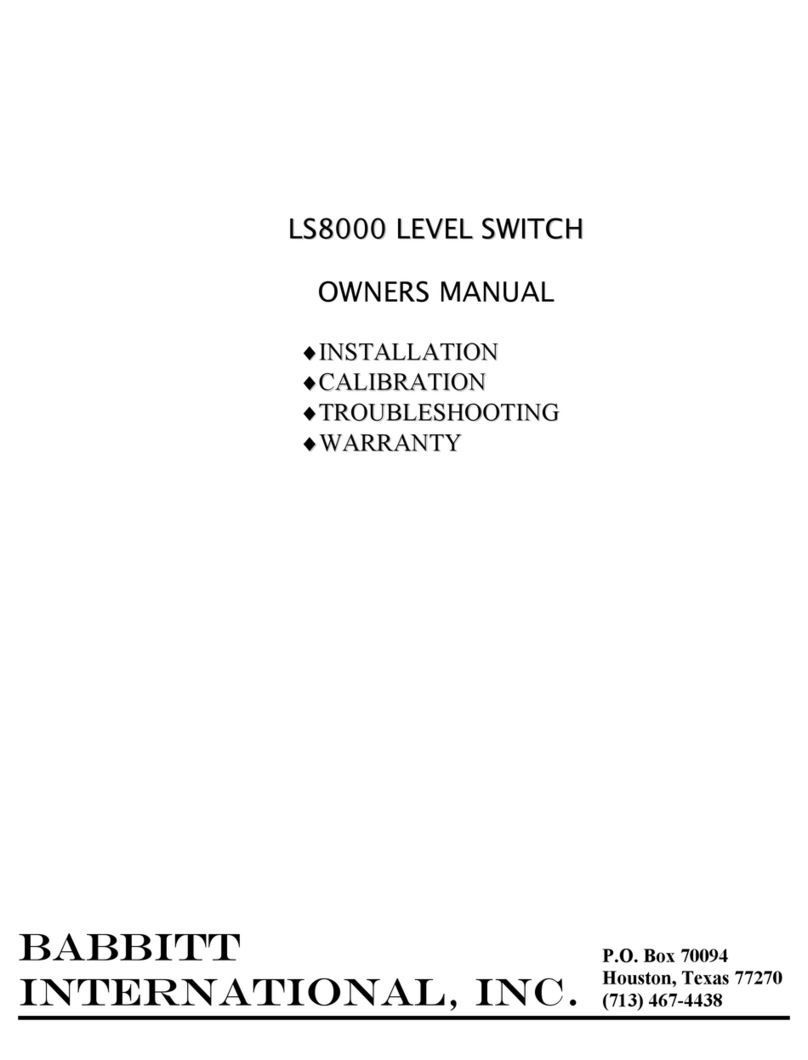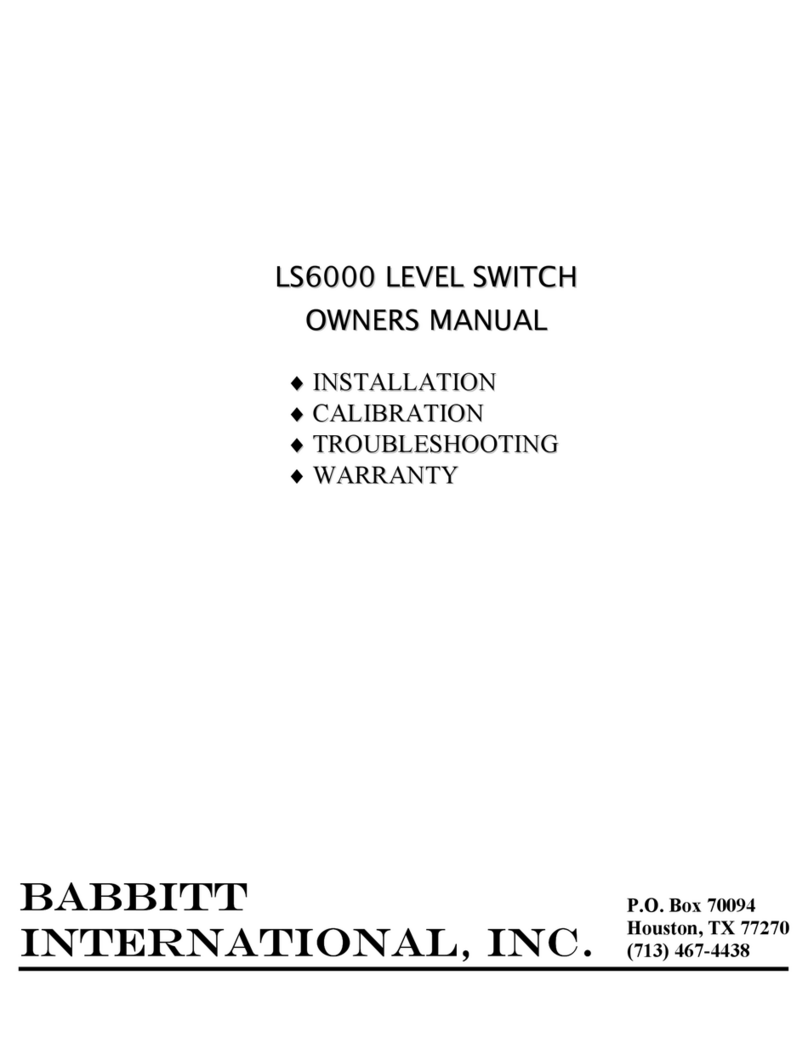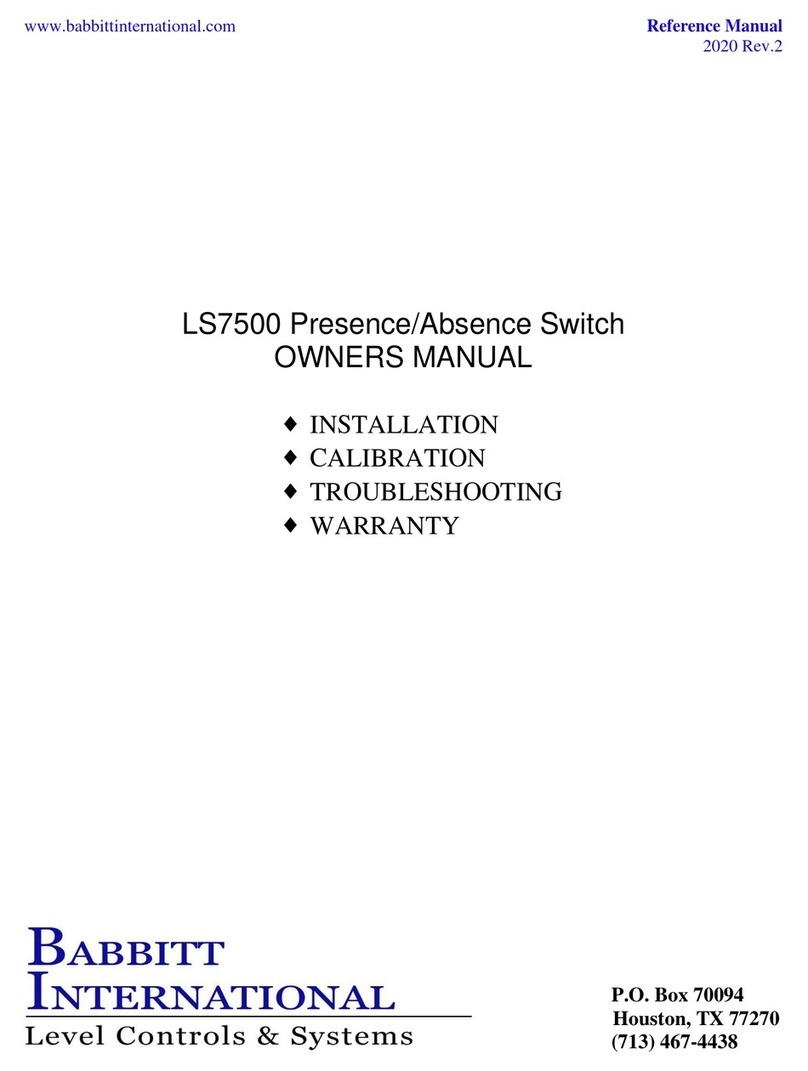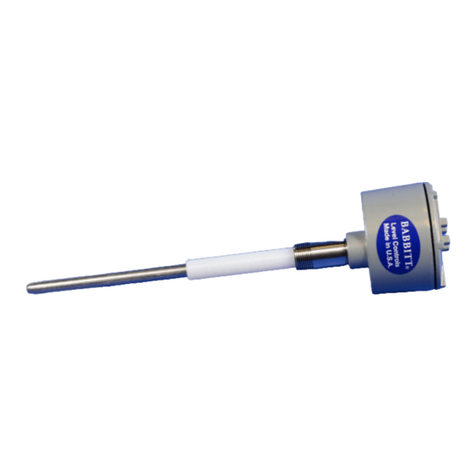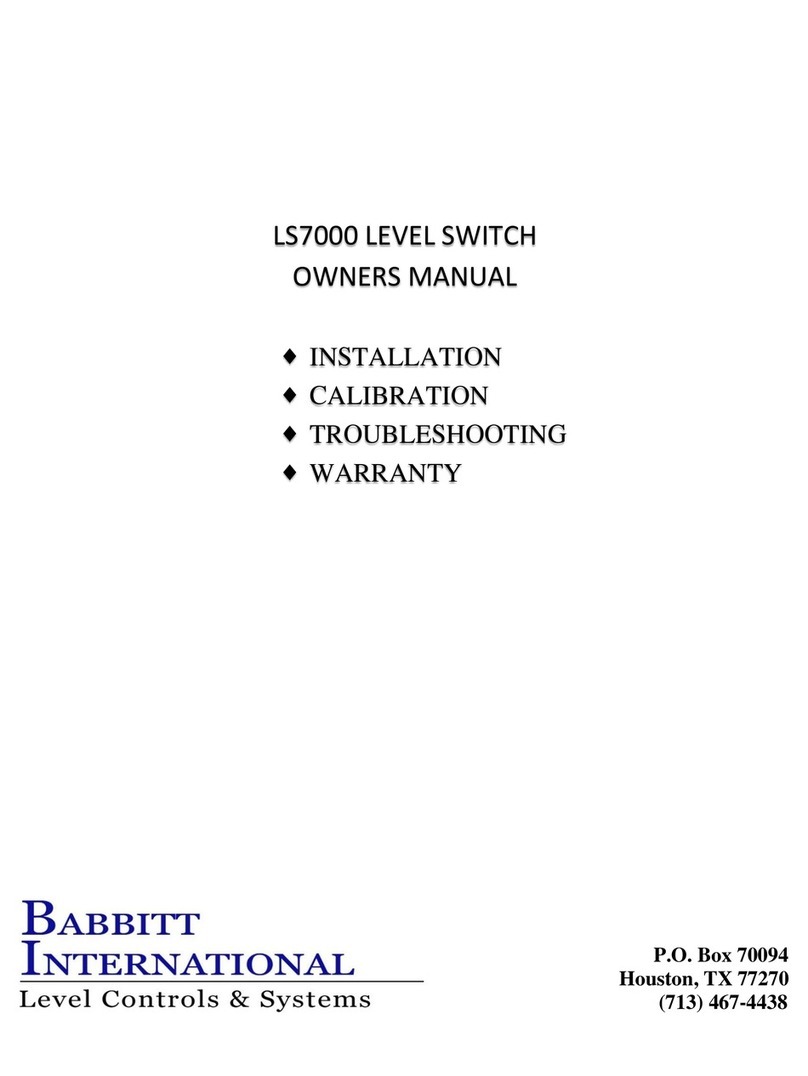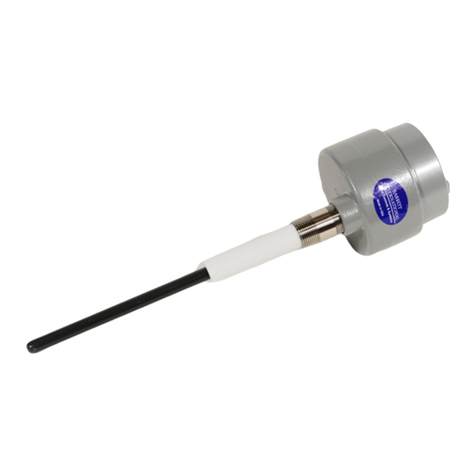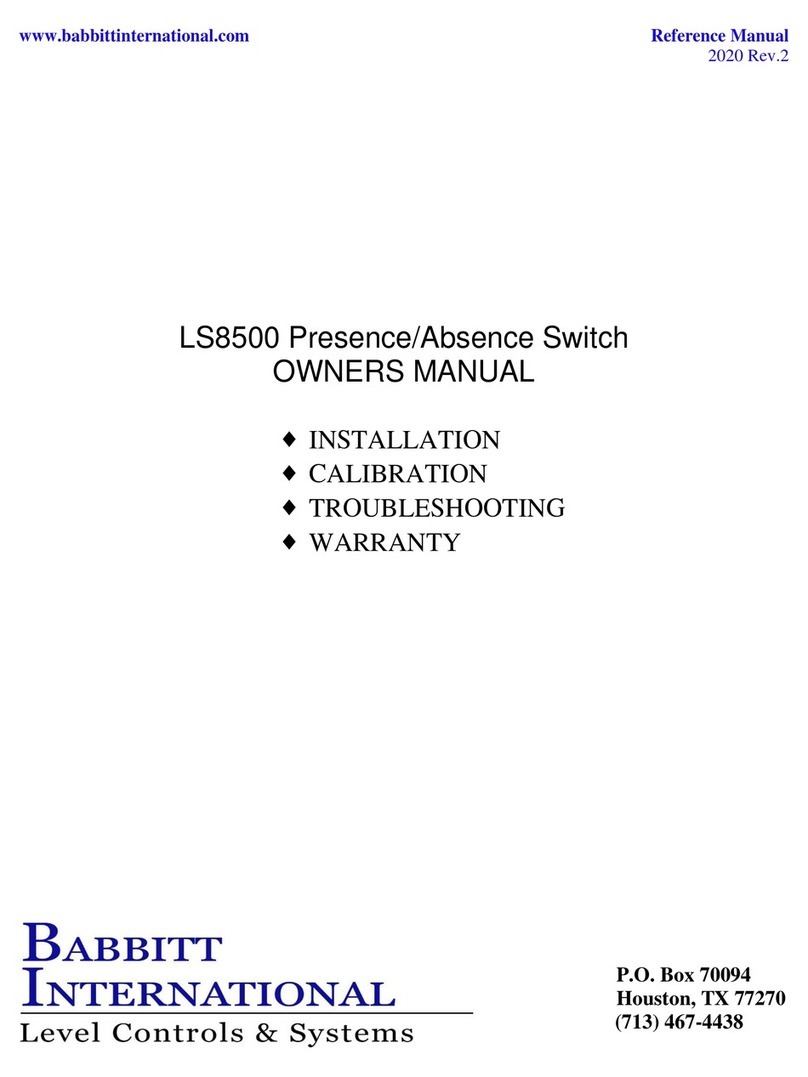
2. THEORY OF OPERATION
The LS8000/2 employs a radio frequency (RF) balanced impedance bridge circuit to detect the level of material
along a vertically mounted probe.
As the fluid level rises along the probe, the output of the bridge changes proportionally to the fluid level. The
setpoint potentiometers determine at what level the circuit detects the low and high setpoints.
The receiver may also control 2 independent probes in the same or different tanks. Each probe has a separate
transmitter and is connected to the receiver with a twisted, shielded pair of wires.
3. INSTALLATION
*CAUTION: ALL INSTALLATION AND WIRING MUST CONFORM TO NEC AND ALL OTHER
LOCAL ELECTRICAL CODES. TAKE SPECIAL CARE IN OBSERVING HAZARDOUS AREA
SAFETY PROCEDURES. WE ASSUME NO LIABILITY FOR IMPROPERLY INSTALLED OR
WIRED UNITS.
A. Inspection
After unpacking the LS8000/2, visually inspect the unit for any damages.
Please advise the factory or your local distributor of any damage.
A complete unit should consist of the following:
1. An explosion proof enclosure(s) with probe(s) attached.
2. A transmitter module in each explosion proof enclosure.
3. The LS8000/2/R receiver card.
4. A plastic snaptrack to mount the receiver card.
B. Physical Installation of Transmitter Module and Probe
1) The LS8000/2 is installed into the vessel wall using a ¾” NPT connection. This can be either a threaded
coupling or a tapped entry such as a flange.
2) The teflon insulator should always extend at least 2” through the vessel wall.
3) Always check for physical room around the location you have chosen to allow for installation. Allow 2 ¾”
turning radius to screw the probe in and clearance above for the length of the probe.
4) CAUTION: Always take the necessary safety precautions when cutting or welding in the
coupling for the LS8000/2.
a) Tag and lock out the electrical power to the equipment that services the vessels.
b) Check liquid or dry powders that create a gas in the vessel for oxygen as well as the explosion factor.
(All dust will explode.)
c) Vessels that are cross vented have to be isolated.
5) Screw the LS8000/2 into the connection provided. In dry material application, no sealant on threads is
required. In liquid, Teflon or a good pipe thread sealant may be used.
6) The LS8000/2 has a ¾” NPT conduit entry. When wiring these units, conform to the National Electrical
Code and any other city or company codes.
7) Always install the electrical connection into the ¾” NPT conduit entry so water will not follow the
connection routing into the threads of the conduit hub. To guarantee that condensation and water will stay
outside the unit, install a EYSM unilet before each LS8000/2 and fill with explosion proof sealing cement
8) When required, the LS8000/2 probe can be bent to meet your special application. Remember to allow 2” of
clearance between the probe and the vessel wall. If the probe is to be used in a pressure application, the
factory must bend the probe to your specifications.
9) Location of probes on high level installations is more critical on dry material than liquids. Note the
following:
a) For dry materials, mount the LS8000/2 in the top of the vessel whenever possible. (This allows you to
lengthen the probe if necessary.)
b) Avoid mounting the LS8000/2 near the product inlet, vent return lines, dust collectors and vessel
discharge openings on dry materials. Turbulence around these areas can cause erratic detection unless
the probe is long enough. On old installations it might be wise to fill the vessel first to determine the
length or location of the probe.
CAUTION: Always take safety precautions before opening vessels inspection.
c) On gravity filled vessels, take into consideration the angle of repose formed by the product.
d) When using the LS8000/2 to stop the flow by means of a butterfly valve or knifegate, make sure the
probe is long enough to allow time to close these slow moving valves.
e) In small vessels where a good location is hard to find, it may be necessary to put a baffle plate between
the probe and the product inlet to keep product off of the probe as it fills.
3
